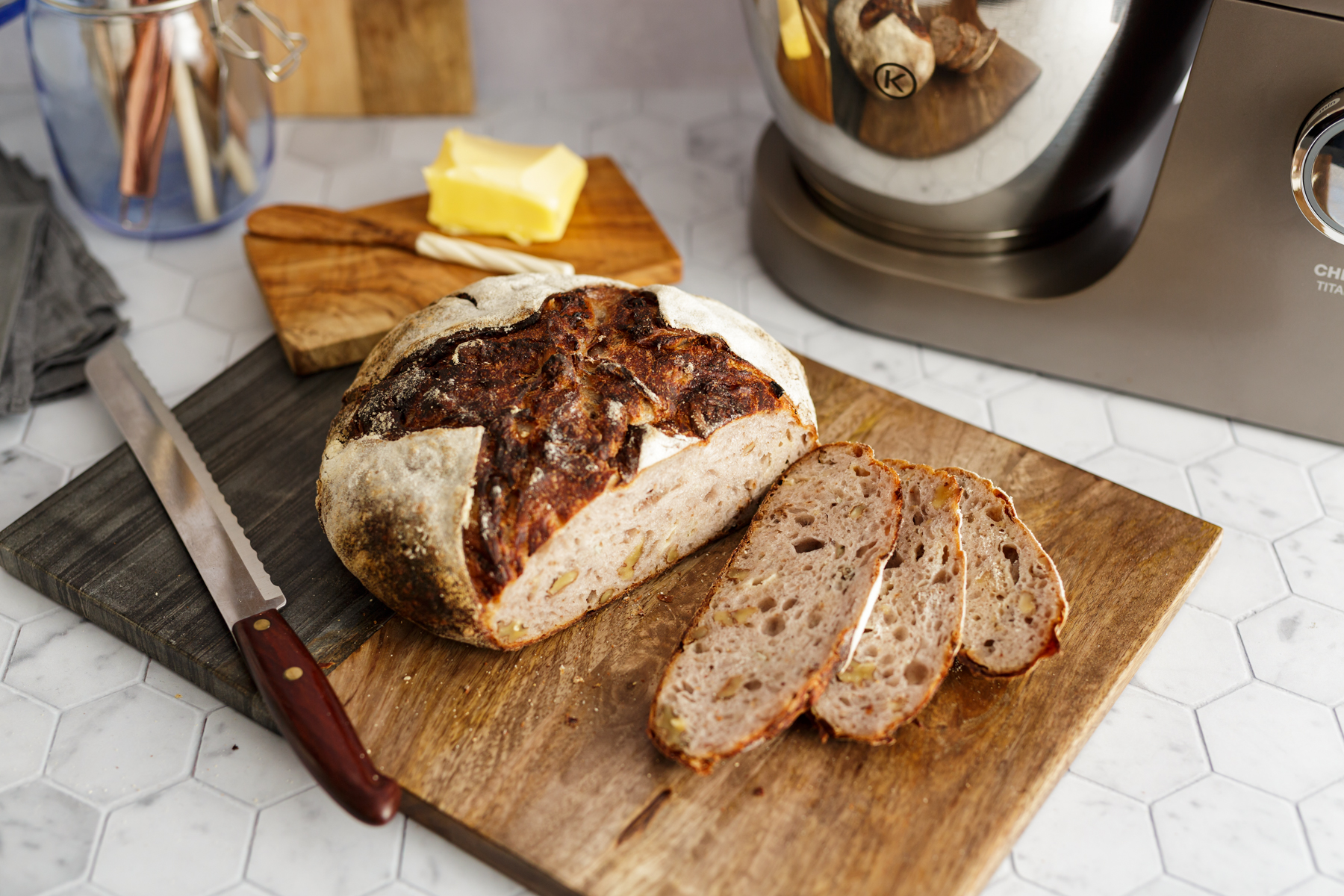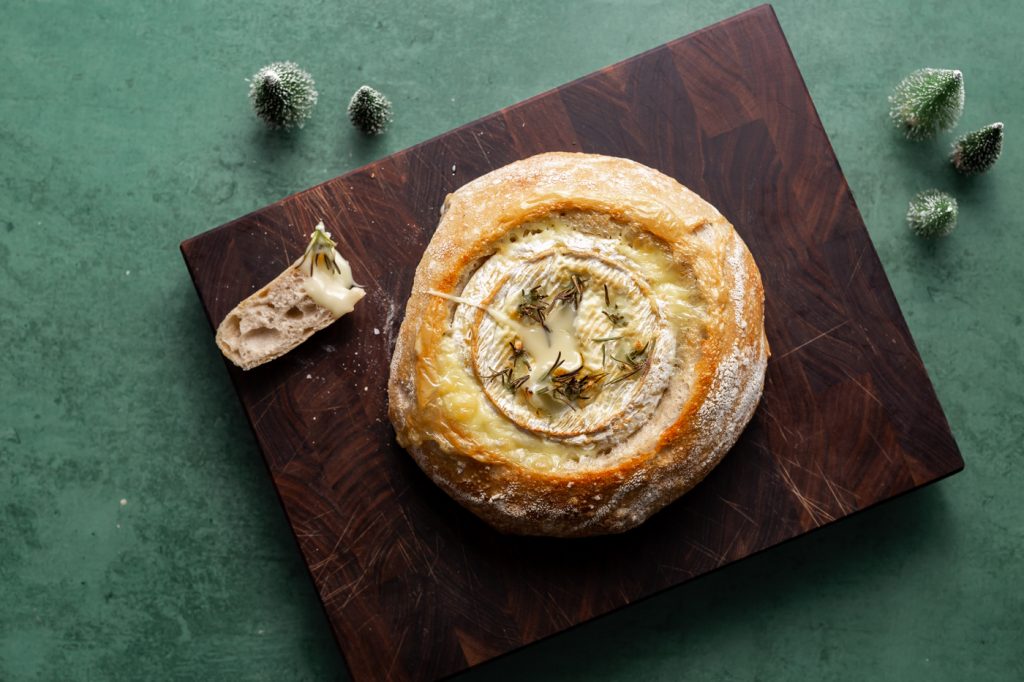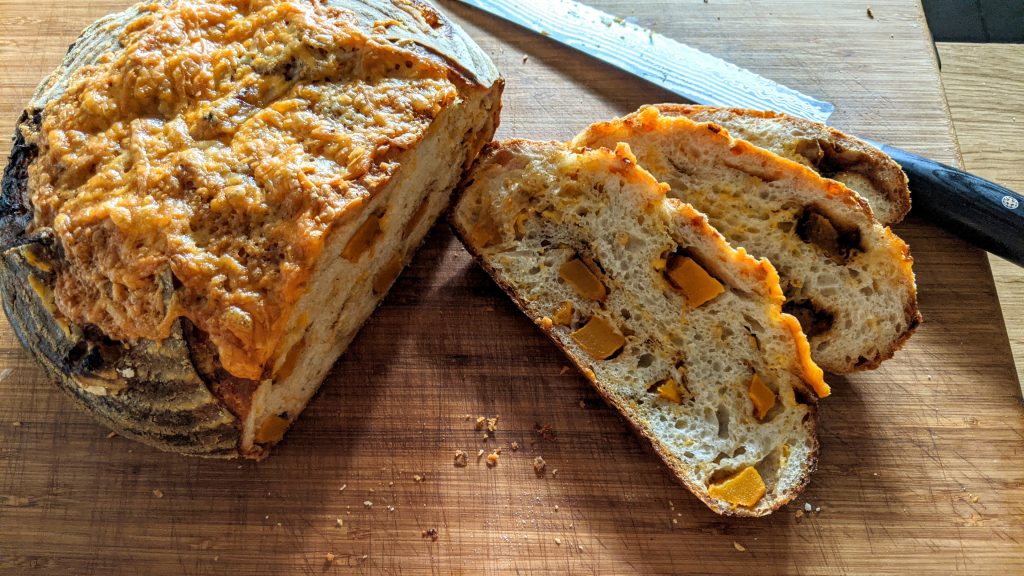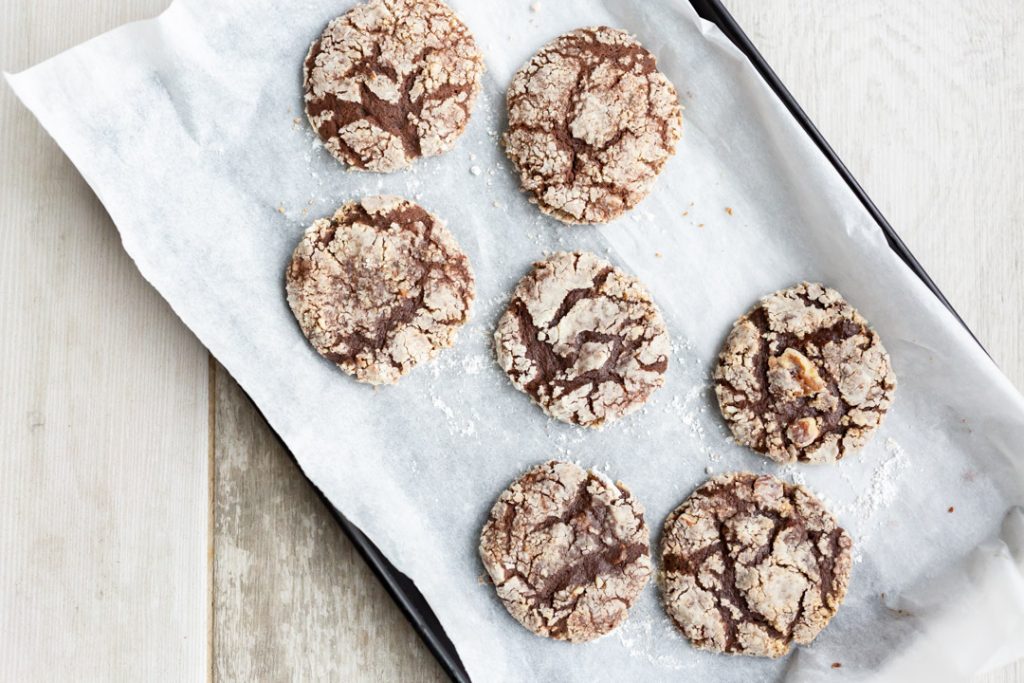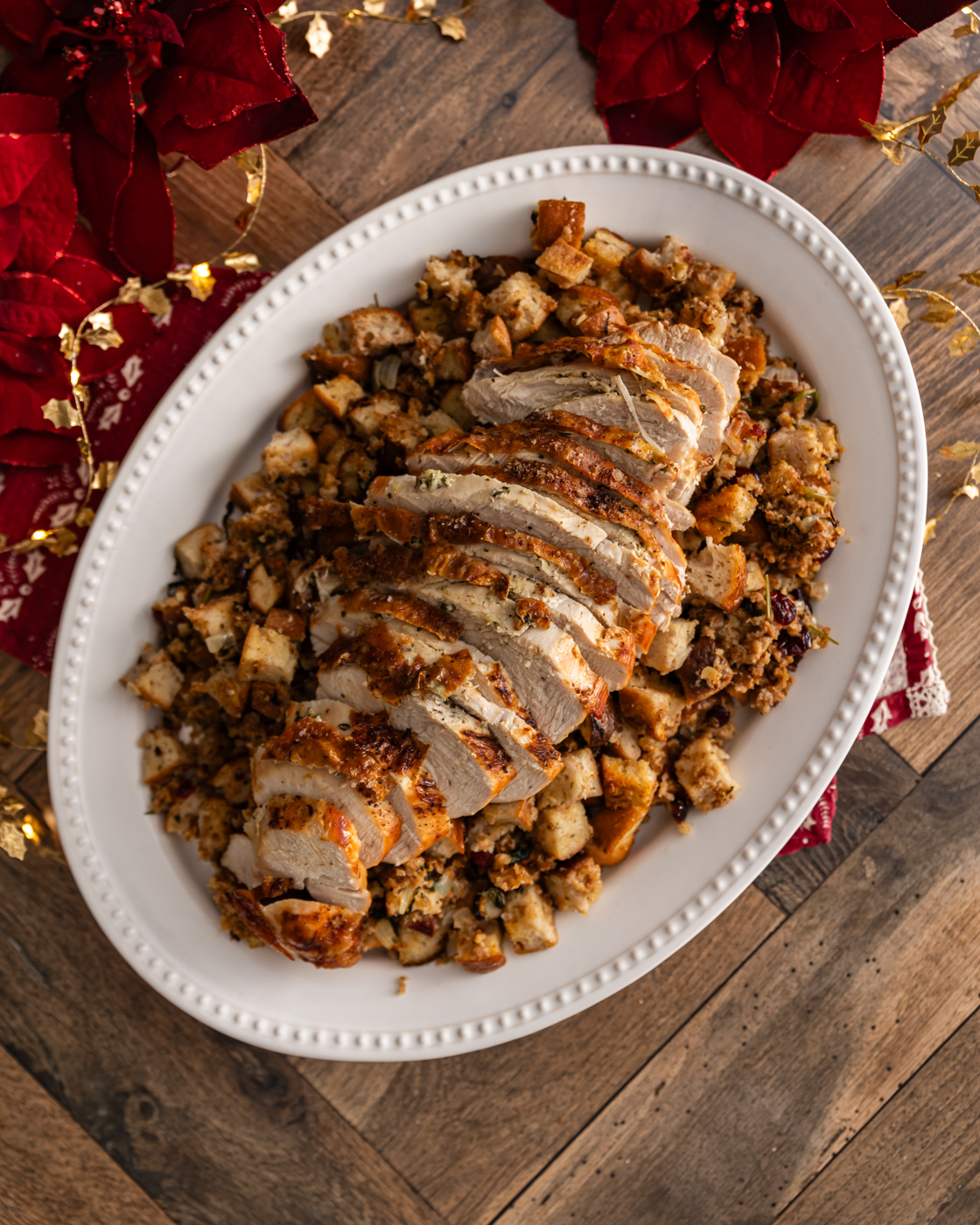

Multiseed Sourdough
Easy
Mulitseed Sourdough – We have teamed up with the ‘King of Bread’ Patrick Ryan, Firehouse Bakery, for a new recipe series. Patrick will be showcasing how to make different doughs and new bread recipes. Watch the full step by step video here.

Multiseed Sourdough
Easy
Introduction
Mulitseed Sourdough – We have teamed up with the ‘King of Bread’ Patrick Ryan, Firehouse Bakery, for a new recipe series. Patrick will be showcasing how to make different doughs and new bread recipes. Watch the full step by step video here.
Ingredients
- 450g strong white flour
- 50g rye flour
- 10g salt
- 100g mixed seeds
- 325ml water
- 150g sourdough starter
Method
- 1. Add the strong white and rye flour to a clean mixing bowl. Mix the salt through the flour. Add the seeds to the flour and mix through. Add the water and sourdough starter to the flour. Combine all the ingredients together to form a rough dough. Tip: Your sourdough starter should have been fed the day before so that it’s active, bubbling & rising in its container on the day you bake with it.
- 2. Turn the dough out onto a clean work surface. Tip: The gluten forms in the dough once it becomes hydrated but initially the gluten is weak therefore to develop the strength within the dough the dough is kneaded which involves stretching and working the dough.
- 3. Option 1: Hands-On Kneading
- 4. To develop the dough fully, knead the dough for 8 to 10 mins. Tip: When kneading, do not worry if the dough is slightly wet or sticky. Resist the temptation to add any extra flour. Be persistent the dough will come together.
- 5. After approximately 10 mins the dough should be smooth and elastic. You can test the dough using the windowpane test which you will see in the video.
- 6. Option 2: No-Knead (or, very little kneading!)
- 7. Once the dough has roughly come together, knead the dough for just 10 seconds. Return the dough to the mixing bowl and leave to one side for approximately 10 minutes. Tip: When kneading, do not worry if the dough is slightly wet or sticky. Resist the temptation to add any extra flour.
- 8. As the dough rests the gluten within the dough continues to develop. It also creates time when you can continue with your daily life.
- 9. After 10 minutes return to the dough. Turn the dough out onto the work surface and knead for another 10 seconds, then return the dough to the mixing bowl and allow the dough to rest for a further 10 minutes.
- 10. The dough will need to be kneaded one more time. After the third time of kneading for 10 seconds the dough should be smooth and elastic.
- 11. First proving:
- 12. Return the dough to the mixing bowl (which you can lightly grease with a bit of oil to help remove the dough later), cover with cling film and allow the dough to prove for approximately 3 hours at room temperature.
- 13. After 3 hours turn the dough onto a clean work surface and knock the dough back. Tip: Knocking back the dough simply involves knocking the air from the dough with a light kneading which equalised the temperature within the dough.
- 14. Shaping & second proof:
- 15. If making a round loaf, shape the dough to form into a tight ball. Watch the video to see the best method to do this.
- 16. To coat the surface of the shaped dough in seeds, dampen the surface of the shaped loaf by rolling and lightly pressing the dough on a clean damp cloth. Place some seeds into a bowl or plate and rolled the loaf in the seeds.
- 17. Place the shaped dough upside down into a proving basket, seam side facing up. Or alternatively a bowl (Pyrex dish) lined with a tea towel will work fine (without the cloth, your loaf will stick in the bowl and you won't be able to turn it out). Tip: If using a Pyrex dish, prepare the lid of the Pyrex dish by greasing and dusting with flour, this will prevent the dough from sticking to the lid later.
- 18. Fold the corners of the tea towel over the dough and leave to prove at room temperature for another 3 hours.
- 19. Tip: The reason for using a Pyrex dish is that it acts like a proving basket. The dish acts as a support to your dough. It encourages the dough the take on the shape of the dish and to prove up and not just to spread out flat. The dough will also be baked in the Pyrex dish.
- 20. Preheat your oven to 230°C/210°C fan assisted.
- 21. Unfold the tea towel then place the lid on the dish. Flip the Pyrex dish over so the bowl of the Pyrex dish now becomes the lid. Remove the tea towel.
- 22. Using a sharp knife cut the surface of the dough, this is what is known as the baker’s signature. The dough can be cut up to ½ cm deep. Cover the dough with the bowl of the Pyrex dish and place the Pyrex dish into the preheated oven.
- 23. Tip: By baking the dough in the Pyrex dish there is no need to steam the oven. Baking with a lid on the Pyrex dish creates its own steam which will allow the dough to rise and open up while baking. The Pyrex dish is very similar to the old style of Dutch oven baking.
- 24. The dough will need to be baked for 50 minutes in total. Bake for 25 minutes, then remove the lid from the Pyrex and continue to bake for a further 25 minutes.
- 25. Once baked remove the bread from the Pyrex dish and allow to cool.
- 26. Alternatively, if you have a proving basket, pre-heat the oven to 230°C/210°C fan assisted and place a baking tray in the bottom of the oven. Turn the sourdough dough loaf out on to a baking tray or hot baking stone. Score the top of the loaf and put into the preheated oven. To create steam in the oven, in the preheated baking tray in the base of the oven add a handful of throwing ice cubes or pour in some water from a boiled kettle. This will release a blast of steam into the oven. Bake for 35 - 40 minutes, or until a good crust has formed and the loaf sound hollow when tapped on the base.


